Posted: 1/28/13
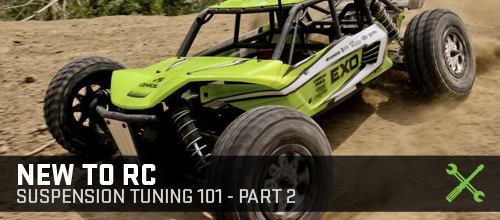
You have probably noticed that your Axial Racing vehicle has options for mounting items such as the shocks or camber links. These options allow you to tune for maximum performance. Well, they allow you to tune for maximum performance if you know what each adjustment is and how it works. This is where this post and Part 1 come in. Make sure you read this post and also read the first installment and you’ll be well on your way to understanding each tuning adjustment and having the handling optimized in your Axial Racing vehicle.
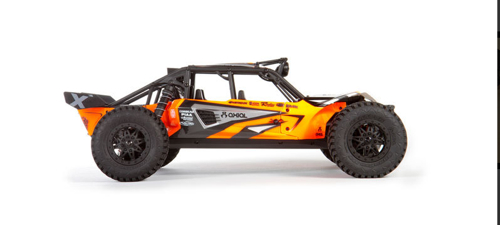
Wheelbase
While some suspension tuning is subtle, wheelbase makes a fairly noticeable change in handling on a rock crawler. It is, however, a subtle change on most high-speed vehicles. Not to be confused with track width, wheelbase—easily viewed from the side--is the distance from the center of the front to the center of the rear tires.
A longer wheelbase makes a vehicle more stable. A fast machine such as the EXO Terra Buggy has a long overall wheelbase (notice its long stretched-out chassis plate) to better handle rough terrain while traveling at high speeds. Lengthening the wheelbase of a SCX10 will help increase stability while climbing ledges and rock staircase-style obstacles. If your crawler wants to tip over backwards when making climbs, a longer wheelbase may help.
It’s important to note that that a longer wheelbase impacts the cornering ability of both fast vehicles and slow-going crawlers. On the EXO, the wheelbase is adjusted by moving shims (plastic spacers) on either side of the rear hub. This is, indeed, a subtle change. When a longer wheelbase is achieved by moving the spacers in front of the hub, steering response is actually slightly increased as the weight distribution changes and more weight will be on the front tires, which increases front traction. A rock crawler with a long wheelbase, on the other hand, simply won’t rotate around corners as easily as a similar vehicle with a shorter wheelbase.
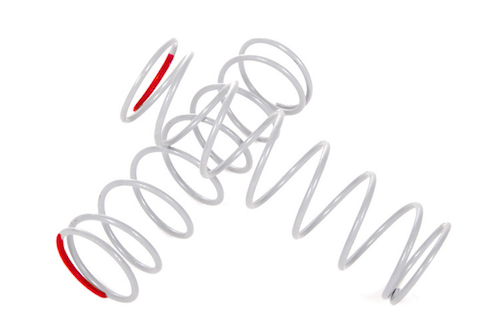
Shock Springs
The main role of the shock spring is to support the weight of the vehicle and return the vehicle to its normal ride height when the suspension compresses. The spring allows the suspension to compress and return back to the “normal” ride height.
A stiff spring will not easily compress for every bump and, in contrast, a spring that is too soft will not properly support the vehicle and will compress too easily and too much.
Stiffer springs help absorb bigger impacts from bigger air. Softer springs help a suspension react quickly to rough terrain. Stiffer front springs are often used to keep a vehicle from spinning out as stiffer springs reduce traction. The key is to find the right front to rear combination that provides the amount of steering you want and the over stiffness needed for the type of terrain your tackling and the weight of your vehicle.
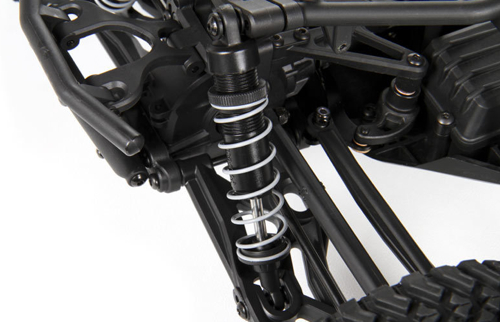
Shock Position
Shock position refers to the different mounting positions on the suspension arms and shock towers.
Changing shock position on a lower suspension arm changes how much leverage the suspension arm places on the shock. Moving the lower shock mount in towards the chassis will create a softer feeling shock. It will feel the same as going to a softer spring. Moving the lower shock mount out on the arm decreases the leverage of the arm on the shock and will make the shock feel stiffer.
Changing the shock position on the tower is a more subtle change. Moving the upper shock out will put the shock in a more vertical position. This creates a linear feel for the spring. Leaning the shock in will create a more progressive feel in which the suspension feels stiffer as it's compressed.
Shock Oil
The oil in your shock is what makes a shock absorber a shock absorber. While the shock absorbs impacts from bumps and jumps so to speak what is really going on is the piston moving through the oil absorbs or transfers the energy of the spring. Otherwise, without the oil, the vehicle would bounce up and down repeatably after each bump and jump.
Thicker oil will slow the piston down and generally feel like a stiffer spring. The opposite is true of thinner oil. Shock oil should be changed as part of routine maintenance (how often depends on how much use your vehicle gets and how dusty the conditions are). Shock oil can also be changed for extreme temperatures. While the high quality Axial Racing silicone shock oil isn’t impacted too much by temperature, running in cold weather during the winter may require thinner oil and hot summer temps may require thicker oil.
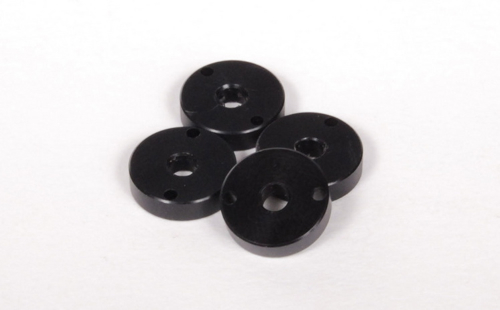
Shock Piston
Shock pistons come with different size holes in them and/or with different number of holes in them. Whether the holes are in the edge of the piston or in the piston, like shock oil, the size and the number of the holes in the shock pistons control how fast the piston moves through the oil. Large holes allow the piston to move quickly and small holes slow the piston down.
Switching to smaller holes in the piston will allow a shock to offer more resistance to fast movement such as landings from big jumps. Keep in mind that if there is too much resistance, the shock will not properly absorb impact. If the holes are too small and the oil can't move through fast enough, the shock will essentially lock up instead of move freely. Larger holes matched with appropriately thicker fluid won’t lock up (unless the fluid is far too thick).
Pistons offer the same rate on rebound as they do on compression. An exception is Axial Racing's dual stage pistons allow you to typically set up the shock for less resistance on rebound. This allows the shock to absorb an impact and then quickly return to normal position, ready for the next impact.
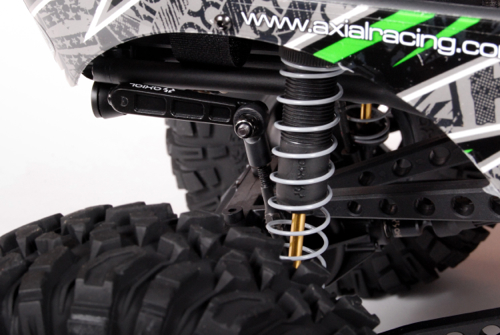
Sway Bar/Sway Bar Thickness
Sway bars are mechanical devices that limit chassis or body roll. That is why they are sometimes referred to as anti-roll bars. The good part about sway bars is that they do not interfere with how the vehicles handles big air.
Thicker sway bars offer more resistance than thinner sway bars. Thicker sway bars also reduce traction. For example, if you added the firm sway bar (soft, medium and firm are offered in the optional sway bar kit) to the front of your EXO Terra buggy, you would have less front traction and less steering. A good starting point would be medium front and soft rear.
Sway bars also work extremely well to control torque twist. If a front tire is lifting off the ground as you attempt difficult vertical climbs with your Wraith, a rear sway remedy the problem. Front and rear sway bars will also improve the high speed cornering of vehicles such as the Wraith and AX10 Ridgecrest as they will help keep the vehicle flat and level in the turns.